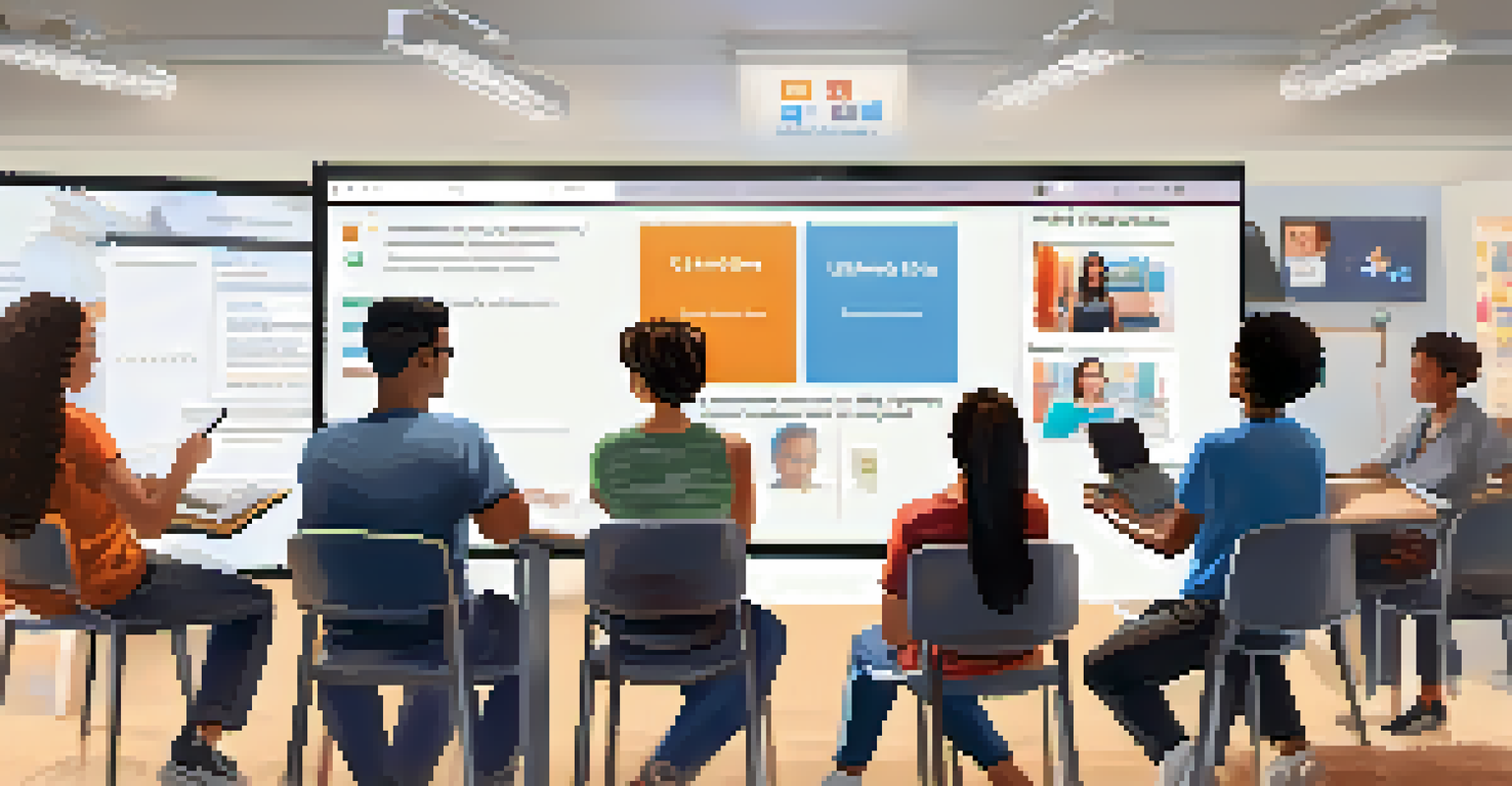Effective Strategies for Online Course Delivery Formats

Understanding Different Online Course Delivery Formats
Online courses come in various formats, each with unique strengths and weaknesses. Common formats include fully asynchronous, synchronous, and hybrid courses. Fully asynchronous courses allow students to learn at their own pace, while synchronous courses offer real-time interaction, providing a classroom-like experience.
Tell me and I forget, teach me and I remember, involve me and I learn.
Choosing the right format depends on your target audience and the nature of the content. For instance, complex subjects that benefit from real-time discussions might be better suited for synchronous formats. On the other hand, self-paced courses can cater to busy professionals looking to enhance their skills without rigid schedules.
Ultimately, understanding these formats will set the foundation for creating an engaging online learning experience. By aligning the course format with learner needs, you can enhance engagement and improve knowledge retention.
Utilizing Engaging Multimedia Content
Incorporating multimedia elements such as videos, infographics, and podcasts can significantly enhance the learning experience. Visual content captures attention and can simplify complex information, making it easier for learners to grasp key concepts. For example, a short video explanation can often convey ideas more dynamically than text alone.

Moreover, interactive elements like quizzes and discussion forums encourage participation and deepen understanding. By making learning enjoyable and varied, you can cater to different learning styles—whether visual, auditory, or kinesthetic. This inclusivity not only enhances engagement but also fosters a sense of community among learners.
Choose the Right Course Format
Selecting between asynchronous, synchronous, or hybrid formats is key to meeting learner needs and enhancing engagement.
Thus, leveraging multimedia effectively not only enriches the educational experience but also promotes better retention of information. Remember, a well-rounded course that utilizes various formats keeps learners excited and invested in their learning journey.
Implementing Clear Learning Objectives
Establishing clear and measurable learning objectives is crucial for any online course. These objectives serve as a roadmap, guiding learners on what they can expect to achieve by the end of the course. For instance, instead of vague goals, specific objectives like 'understand the principles of effective time management' provide clarity and focus.
The beautiful thing about learning is that no one can take it away from you.
When learners know what they’re aiming for, they can better navigate their study efforts. Clear objectives also help instructors design relevant assessments and activities that align with desired outcomes. This alignment ensures that every component of the course contributes to achieving the goals set out at the beginning.
In essence, clear learning objectives enhance learner motivation and accountability. They transform a passive learning experience into a more active and goal-oriented journey.
Fostering an Interactive Learning Environment
Creating an interactive learning environment is key to keeping students engaged in an online course. This can be achieved through discussion boards, group projects, and live Q&A sessions. Such activities not only encourage collaboration but also allow learners to share diverse perspectives, enriching the overall learning experience.
In addition to fostering interaction, using tools like polls and breakout rooms during live sessions can enhance participation. For example, break-out rooms enable small group discussions, making it easier for shy participants to contribute without the pressure of a larger audience. This strategy can lead to deeper conversations and a more inclusive environment.
Engage with Multimedia Content
Incorporating videos, infographics, and interactive elements enriches the learning experience and accommodates diverse learning styles.
By prioritizing interactivity, you create a sense of belonging and community among learners. This connection can be especially valuable in online settings, where students often feel isolated from their peers.
Incorporating Continuous Feedback Mechanisms
Feedback is an essential component of the learning process, especially in an online setting. Incorporating regular feedback mechanisms, such as quizzes, peer reviews, and instructor comments, helps learners gauge their understanding and progress. Immediate feedback can clarify misconceptions and guide students toward improvement.
Additionally, creating opportunities for learners to provide feedback on the course itself can be invaluable. This not only empowers students but also helps instructors identify areas for enhancement. For example, a simple survey at the end of each module can yield insights into what works and what could be improved.
Continuous feedback fosters a culture of growth, allowing both students and instructors to learn and evolve throughout the course. This iterative approach can lead to a more effective and satisfying educational experience.
Leveraging Technology for Enhanced Learning
The right technology can transform the online learning experience, making it more efficient and user-friendly. Learning Management Systems (LMS) like Moodle or Canvas provide a structured space for course materials, assignments, and communication. Moreover, they often come with integrated tools for tracking progress and engagement.
In addition to LMS platforms, consider utilizing tools like Zoom for live sessions or Google Docs for collaborative projects. These technologies facilitate seamless communication and collaboration, mimicking the benefits of traditional classroom settings. They also allow for flexibility, catering to diverse learner needs.
Foster a Supportive Community
Building a positive learning community encourages collaboration and boosts motivation, leading to improved educational outcomes.
By leveraging technology wisely, you can create a streamlined and engaging learning environment. It’s about picking the right tools that support your course objectives and enhance learner experiences.
Promoting a Positive Learning Community
Building a positive learning community is vital for the success of an online course. Encouraging open communication and mutual respect among participants fosters a supportive environment. Simple strategies, such as introducing icebreakers or encouraging personal sharing, can help break down barriers and build rapport.
Moreover, recognizing achievements, no matter how small, can boost morale and motivation. Celebrating milestones, like completing a module or receiving positive feedback, creates a sense of accomplishment and encourages continued effort. These small gestures can significantly enhance learner engagement.

Ultimately, promoting a positive learning community not only enhances learner satisfaction but also contributes to better educational outcomes. When students feel valued and connected, they are more likely to engage actively and persist through challenges.